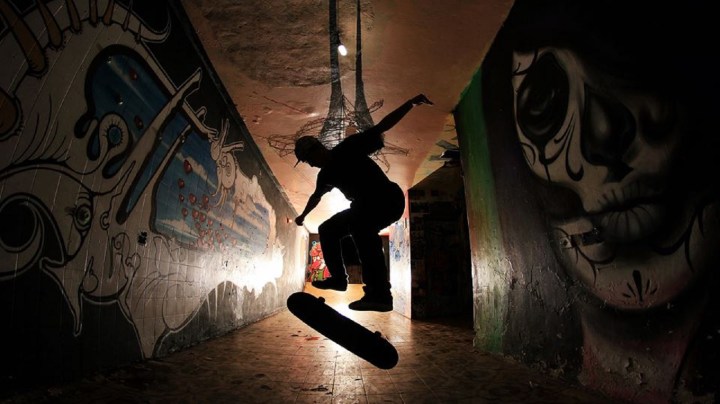How One Skateboarder’s Coping Strategy Flourished Into a Community Center in Brazil

Photo by Tiago Gerolamo
When Anselmo Arruda was a teenager, both of his parents died, and he inherited a house off the coast of São Paulo, Brazil.
What are you supposed to do with a whole house after mourning? Arruda became consumed by skating and decided to build a skatehouse in Itanhaém, São Paulo.
As a teen, he moved into his parents’ summer home on the coast and used skating as therapy. Living alone, he grieved in a positive way, creating a mini-skate park in his own house.

He got his homies to move out all his furniture, tear down walls, and build ramps and quarter pipes in his own house. He took advantage of his backyard and paved it down so he and others could skate through the windows and not land on grass. Other homies tagged up the spot and after a summer of hard work, Coletivo Caverna was open to all.
Coletivo Caverna is now a community resource in Itanhaém. It has grown from a place of personal transformation to a cultural center opening its doors to diferente culturas de rua (street cultures), such as hip-hop and visual art. They use the space for community education events, music shows, local vendors, fundraising events, and artistic and cultural exchange.

Brazil is a country known for its strong skate and urban culture in its big cities. While longboarding is more frequent in Rio, São Paulo’s concrete jungle and grand architecture lends itself to skateboarding. Places like Plaza Sé, Anhangabaú, and Roosevelt are public skate areas, and Galeria do Rock, an area with dozens of skate and tattoo shops, are all close to the center of the city’s tourist areas. So it’s no surprise that São Paulo’s strong skate culture followed Arruda to the coast of Itanhaém in a way to bring community together.
Check out this short documentary on Coletivo Caverna: